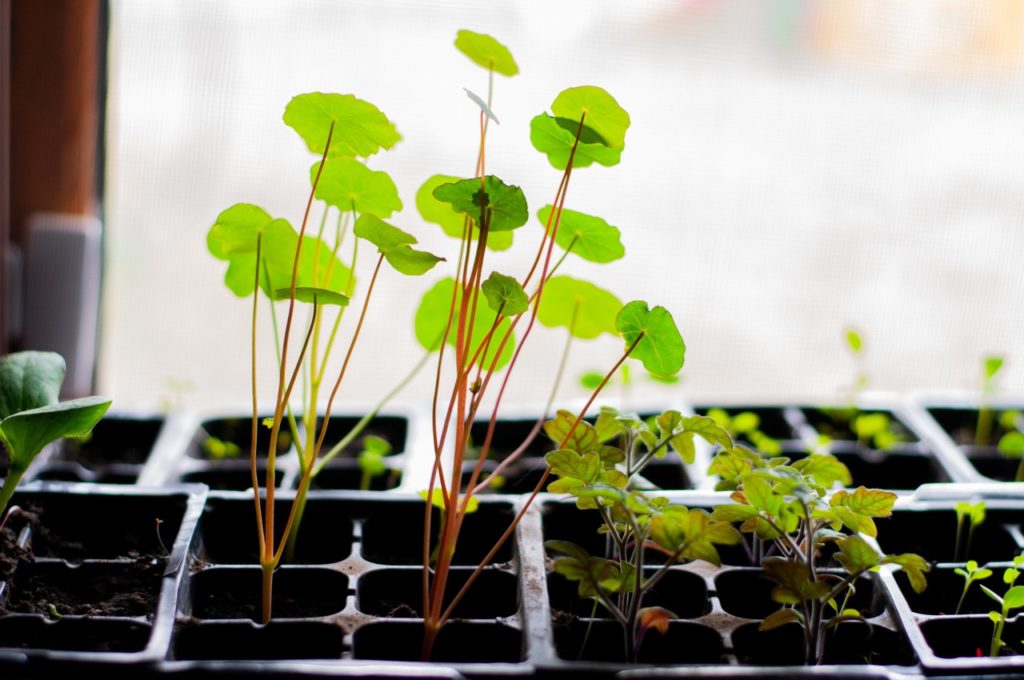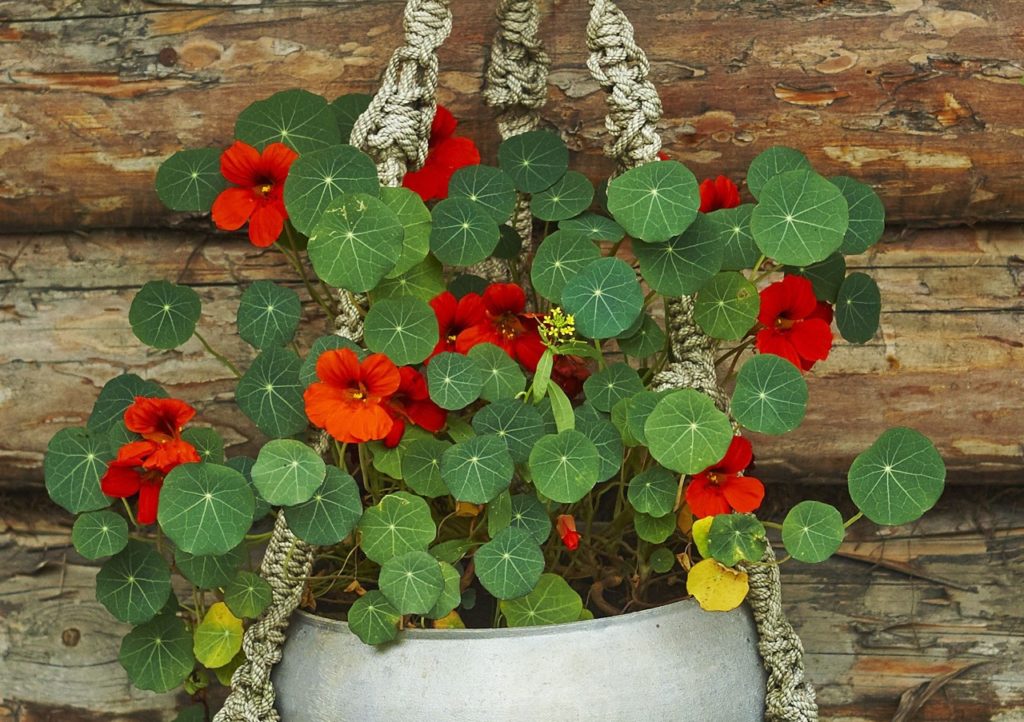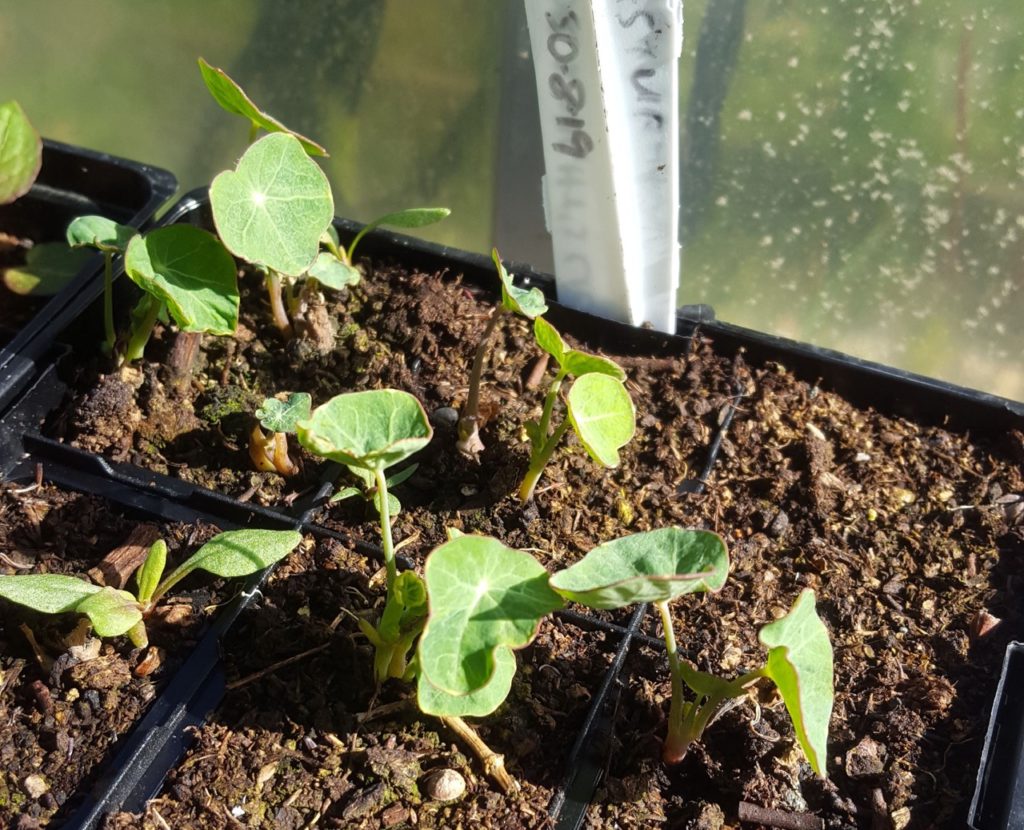Growing Nasturtium Indoors? They’ll Need Bright Conditions And Free-Draining Potting Soil

ANNUALS > NASTURTIUM > INDOORS

Elizabeth is a Permaculture Garden Designer, Sustainability Consultant and Professional Writer, working as an advocate for positive change. She graduated from the University of St. Andrews with an MA in English and Philosophy and obtained a Diploma in Applied Permaculture Design from the Permaculture Association.
Reviewed By COLIN SKELLY

Colin is a Horticulturist and Horticultural Consultant with experience in a range of practical and managerial roles across heritage, commercial and public horticulture. He holds the Royal Horticultural Society’s Master of Horticulture award and has a particular interest in horticultural ecology and naturalistic planting for habitat and climate resilience.
NASTURTIUM GUIDES
Companion Planting
Container Growing
Indoors Growing
Sowing
Varieties
Nasturtiums are extremely easy to grow in a garden.
However, if you don’t have any outside space, you might wonder whether nasturtiums can also be grown indoors.
Can You Grow Nasturtiums Indoors?
Nasturtiums are easier to grow outside in a garden, but when you can provide the right indoor conditions, it is certainly possible for you to grow these useful edible and attractive flowering plants as houseplants inside your home.

The best choices for indoor cultivation are smaller, dwarf plants, rather than the much larger and sprawling climbers.
So, you should look out for cultivars of Tropaeolus minus.
Indoor Conditions
Where you place a nasturtium houseplant will be very important, as these plants require specific conditions in order to thrive.
Light
The most important thing that will determine the success or failure of your efforts to grow nasturtiums indoors is the light levels.
When grown in a garden, nasturtiums like as sunny and bright a location as possible and the same is true when you are growing these plants inside your home.
Make sure that you place nasturtiums in a bright spot where they receive natural sunlight throughout as much of the day as possible.
“Think of nasturtiums as needing the same conditions as herbs; bright, warm and free-draining,” shares Master Horticulturist Colin Skelly.
“A bright windowsill or conservatory should be fine as long as they don’t dry out. They could also be succession sown like herbs for use in salads.”

A conservatory, if you have one, will be ideal, but a sunny room with plenty of light elsewhere in your home could also work.
Your nasturtiums should be placed somewhere where they get at least 6 hours of sun per day.
If you do not have a suitable windowsill, then you might need to use grow lights to grow these plants successfully indoors.
Temperature
Temperature is also important.
When sowing the seeds for nasturtiums, the temperatures should be kept above 13°C.
Luckily, this is a typically easy temperature to achieve indoors in most homes.

However, it is important to place nasturtiums somewhere where they will not be exposed to excessively high temperatures, so don’t position them too close to a radiator or another heat source.
High temperatures inside a home can be especially problematic if you want to eat the leaves and flowers of your plants.
One of the great things about growing nasturtiums is the edible yields that you can obtain from these plants, but high temperatures can cause heat stress in the plants and this can affect their taste, making them less palatable.
Humidity
Another concern when growing nasturtiums indoors is humidity.
Nasturtiums prefer moderate humidity, so it is important to make sure that the location where the nasturtiums are growing does not have too high or too low humidity levels.
Choosing A Container
Nasturtiums like free-draining conditions and cannot tolerate waterlogged soil, so it is important to make sure that any container you choose has good drainage at the base.

You might grow nasturtiums in pots, window boxes or hanging containers of some kind.
Choosing A Growing Medium
Fill whichever container or containers you choose with a peat-free multipurpose growing medium with around one-third grit or gravel added to improve drainage.
Growing Nasturtiums Indoors
Once you know where you will grow nasturtiums in your home, it is time to think about the process of actually growing your plants.
It is very easy to grow nasturtiums from seed and while you can also simply purchase young plants, growing from seed is a good idea.
Sowing
Nasturtiums are usually sown indoors between March and May in the UK.
This is the same whether you are planning to transplant seedlings to the garden or pot them up into larger containers and continue to keep them indoors throughout the summer months.

Sow individual seeds into small 9cm wide pots.
After a couple of weeks, the seeds should have germinated successfully and you should see them growing strong.
Once the plants’ roots mostly fill the pots, they can be potted up into larger containers, either on their own or alongside other plants.
Watering
Caring for nasturtiums grown indoors in a suitable spot should be relatively easy.
The most important thing will be ensuring that you water them sufficiently, but do not overwater.
Water when a probing finger can detect that the first couple of centimetres of the growing medium is dry, but make sure excess water can always drain away freely.
